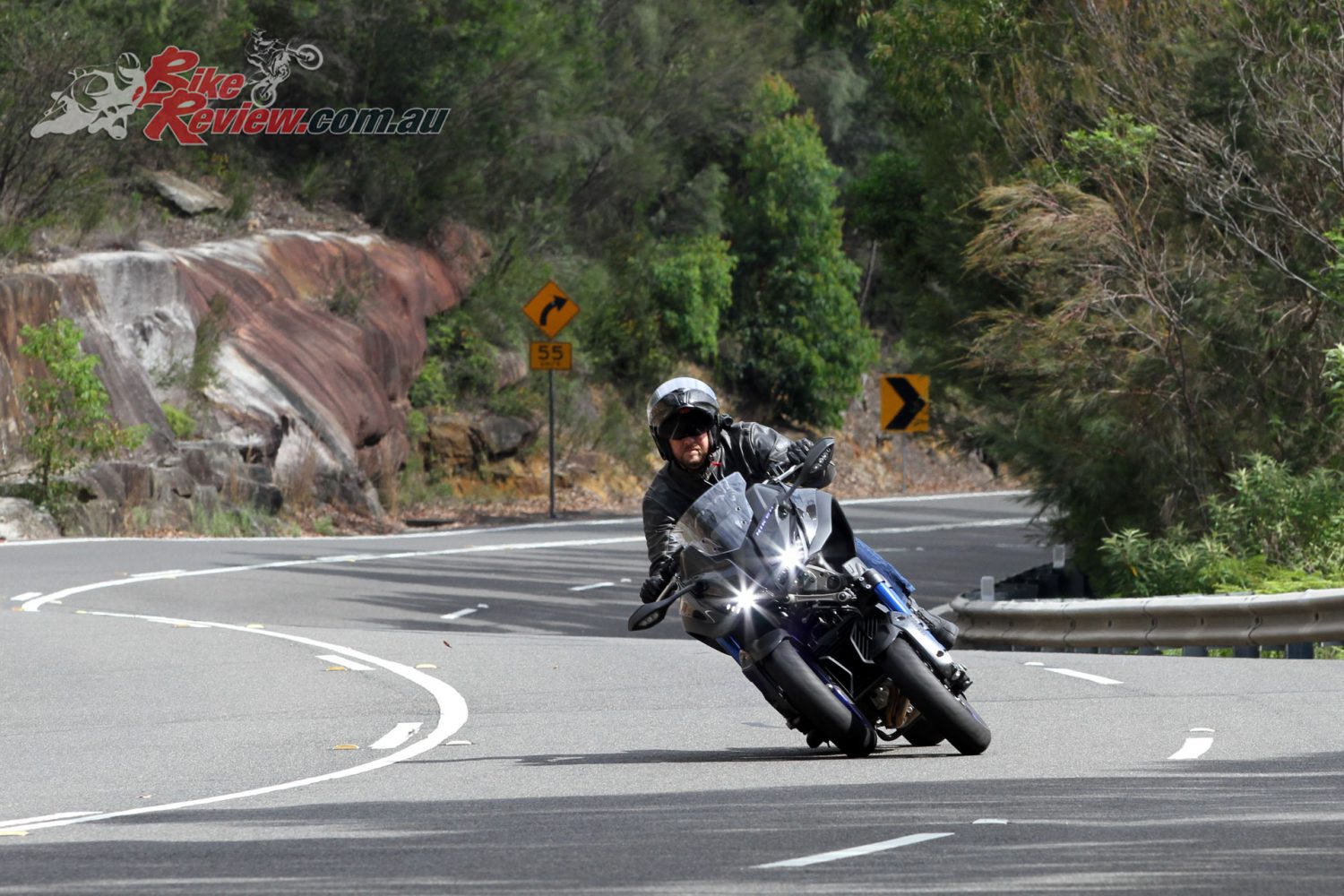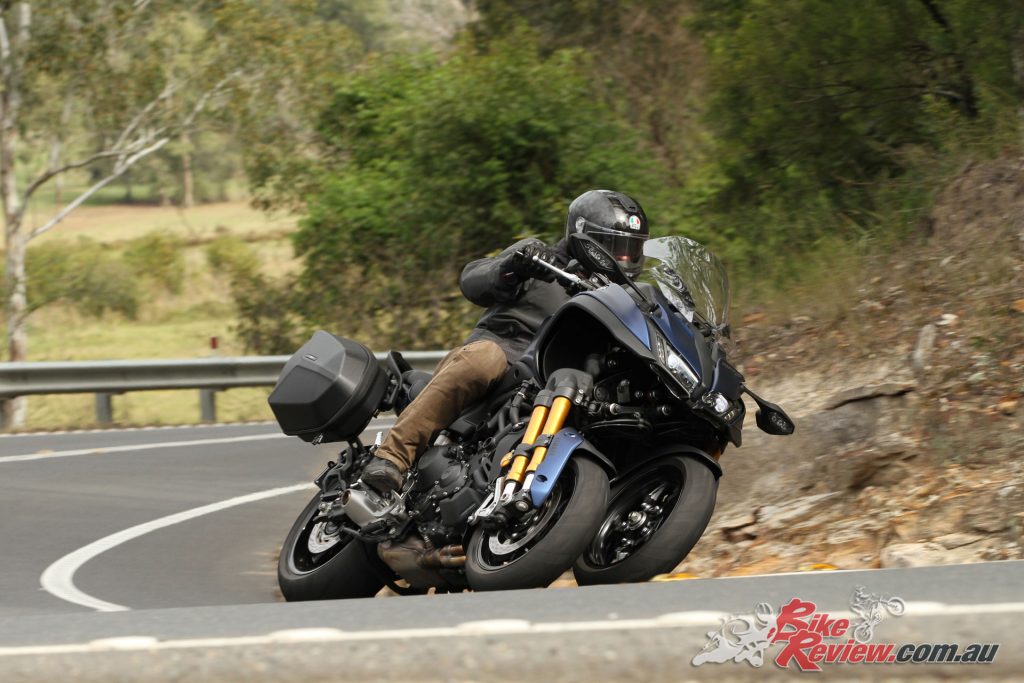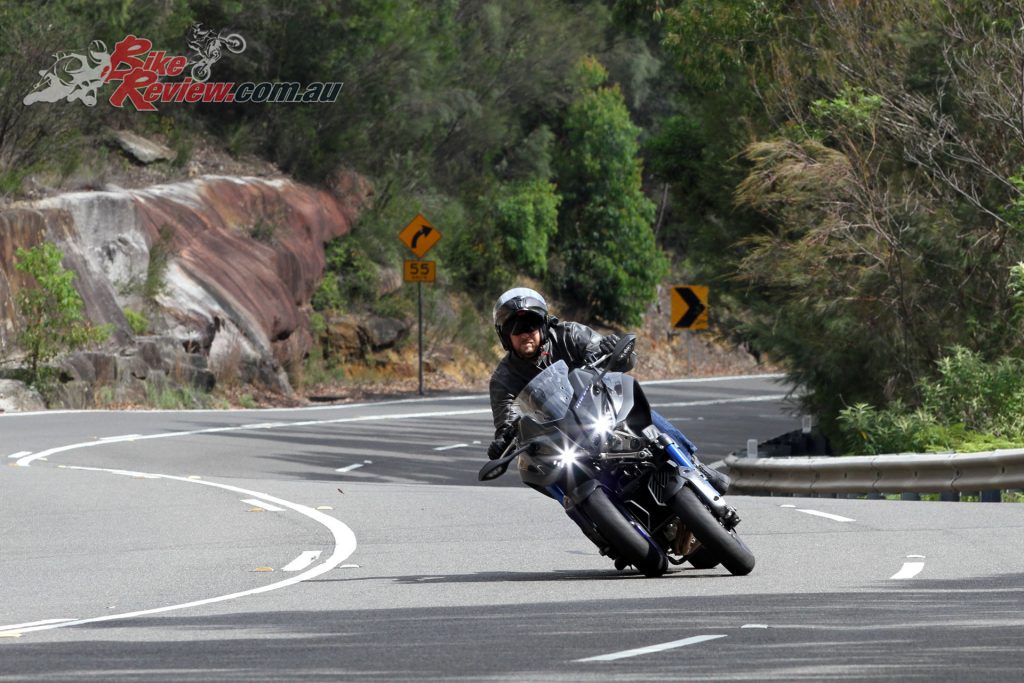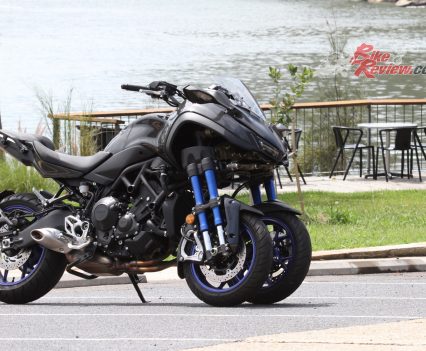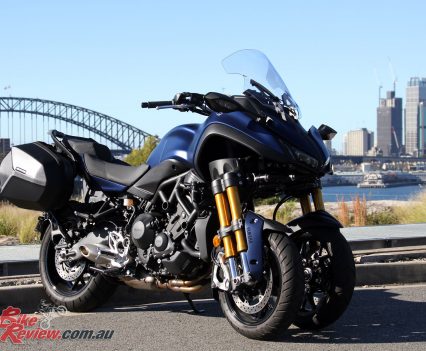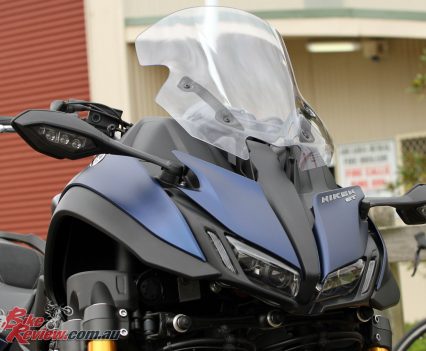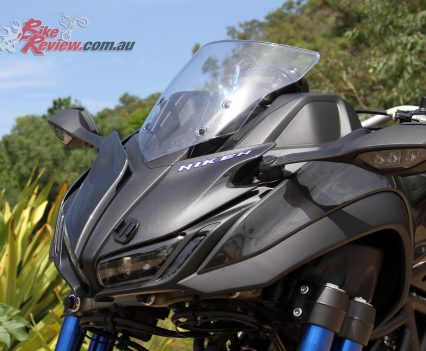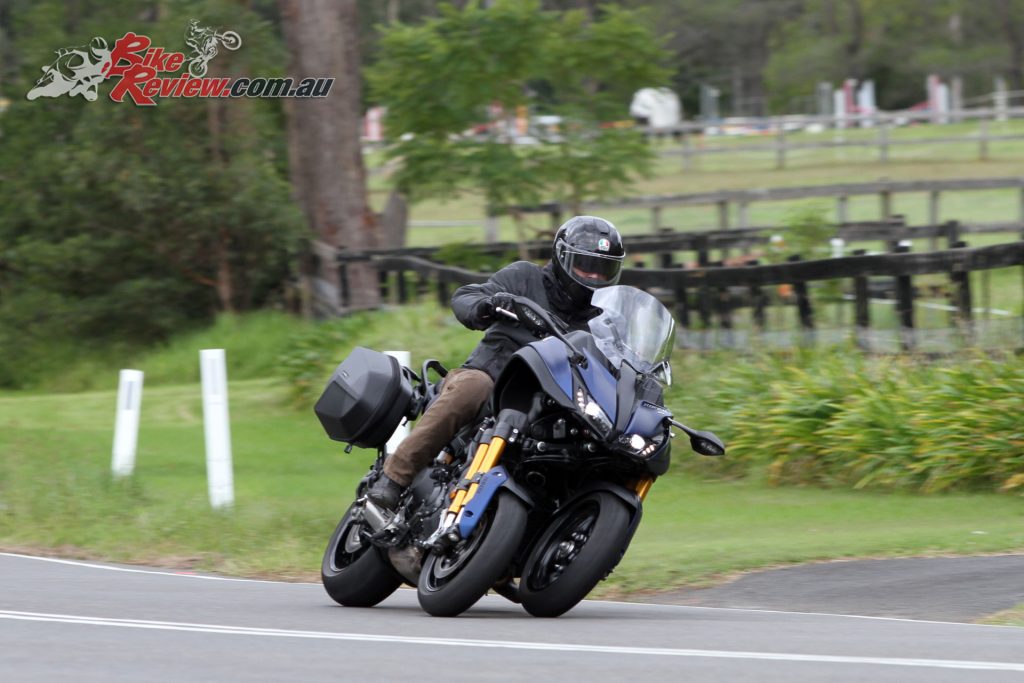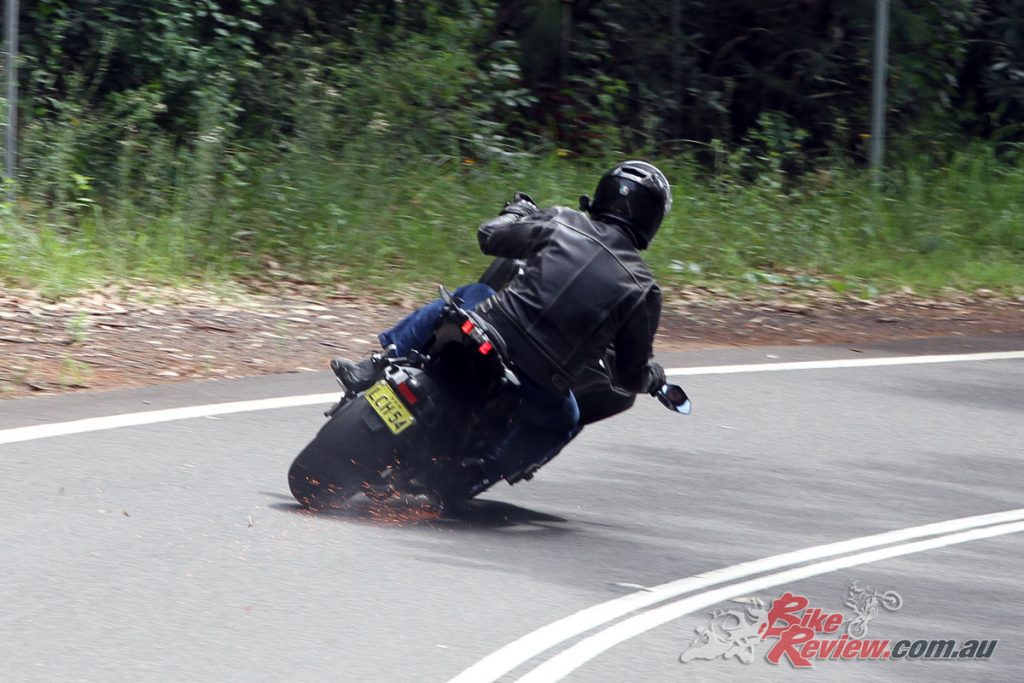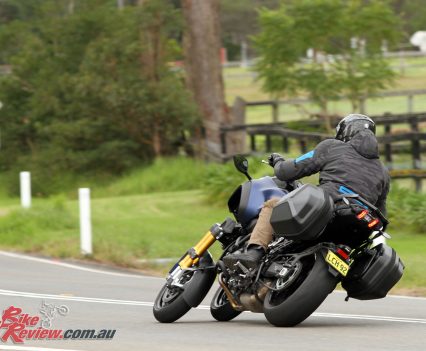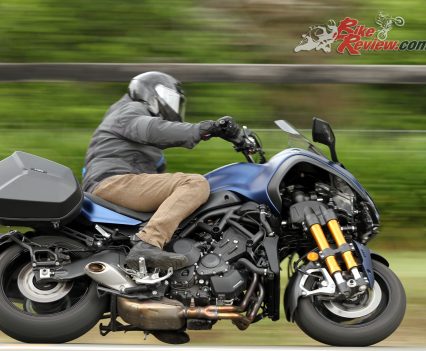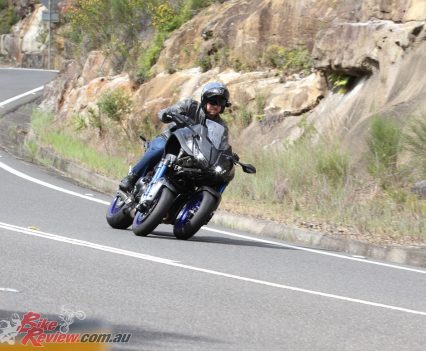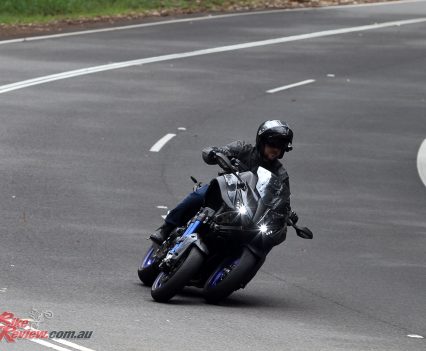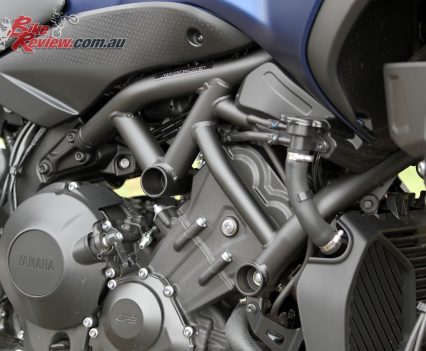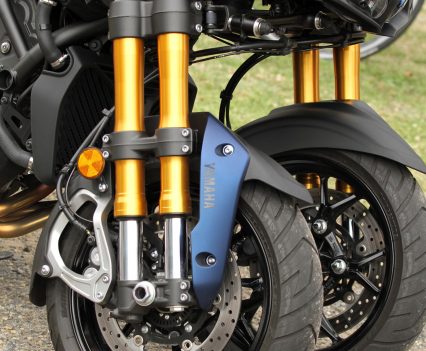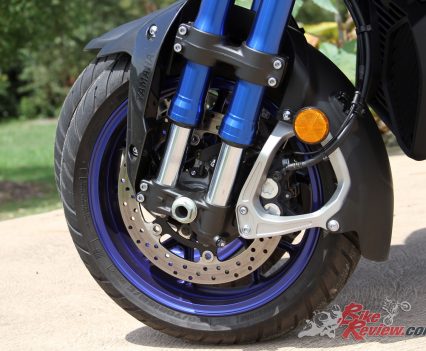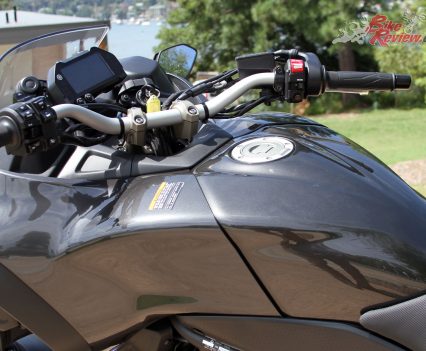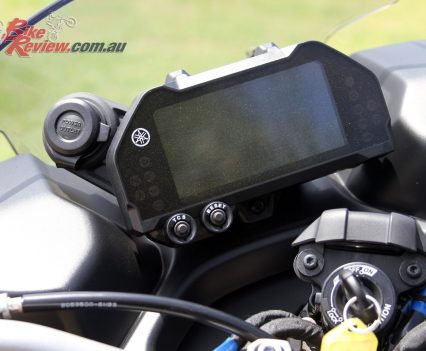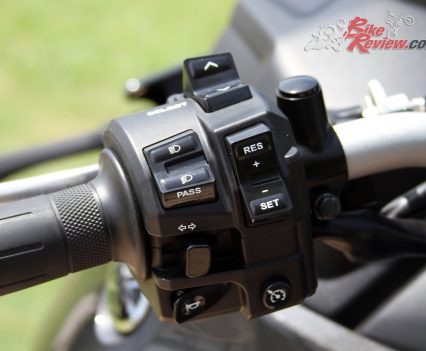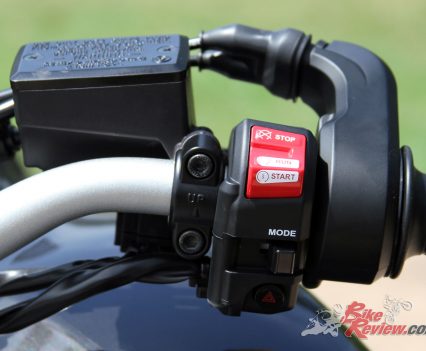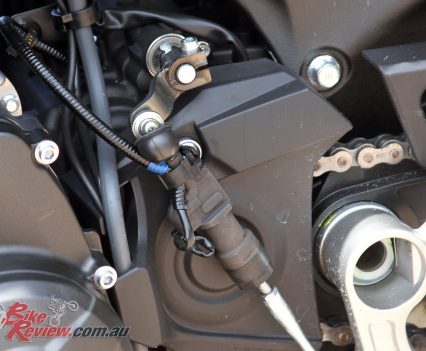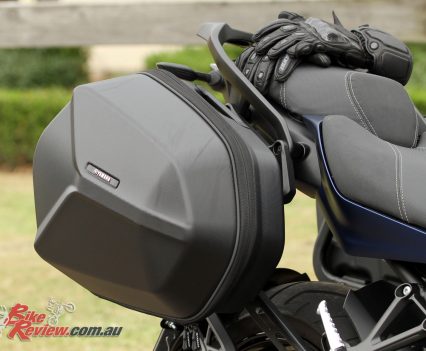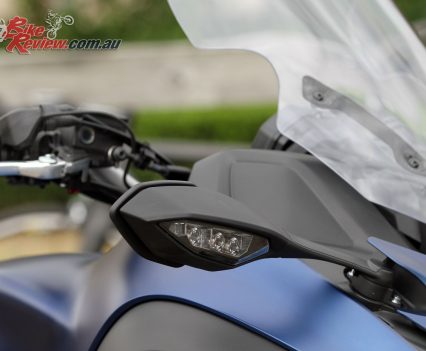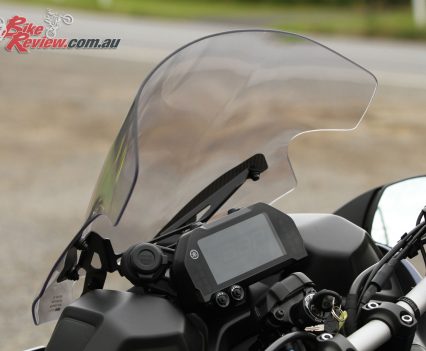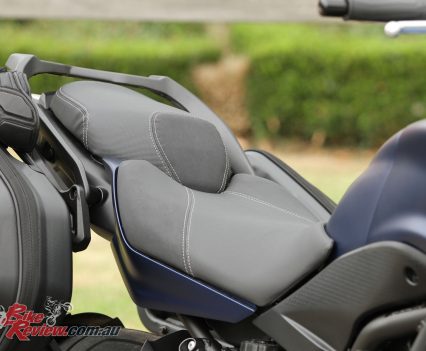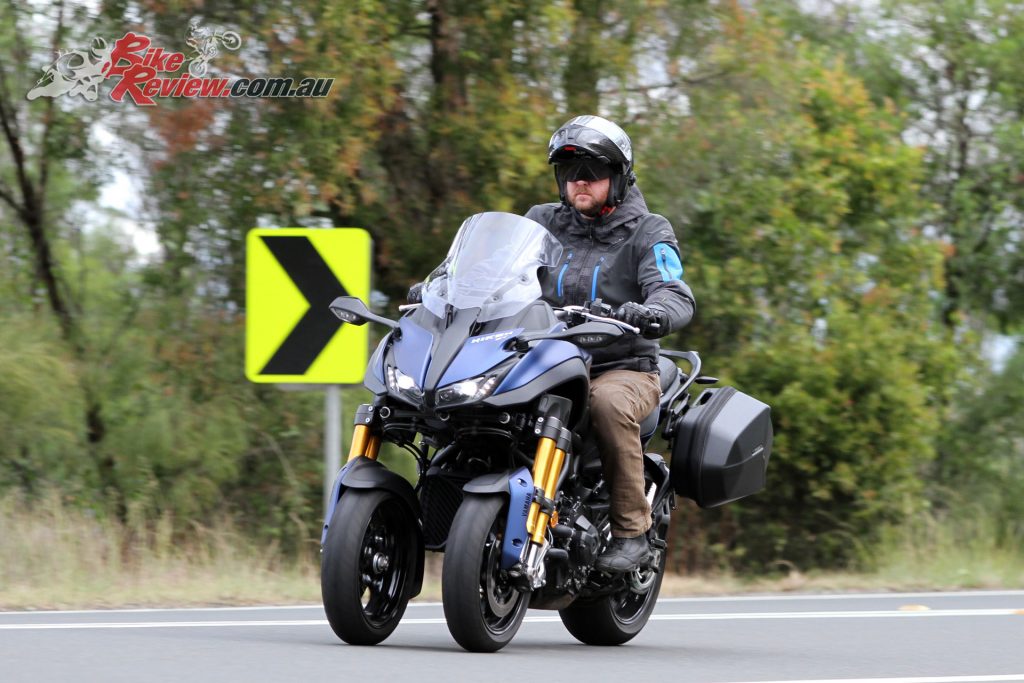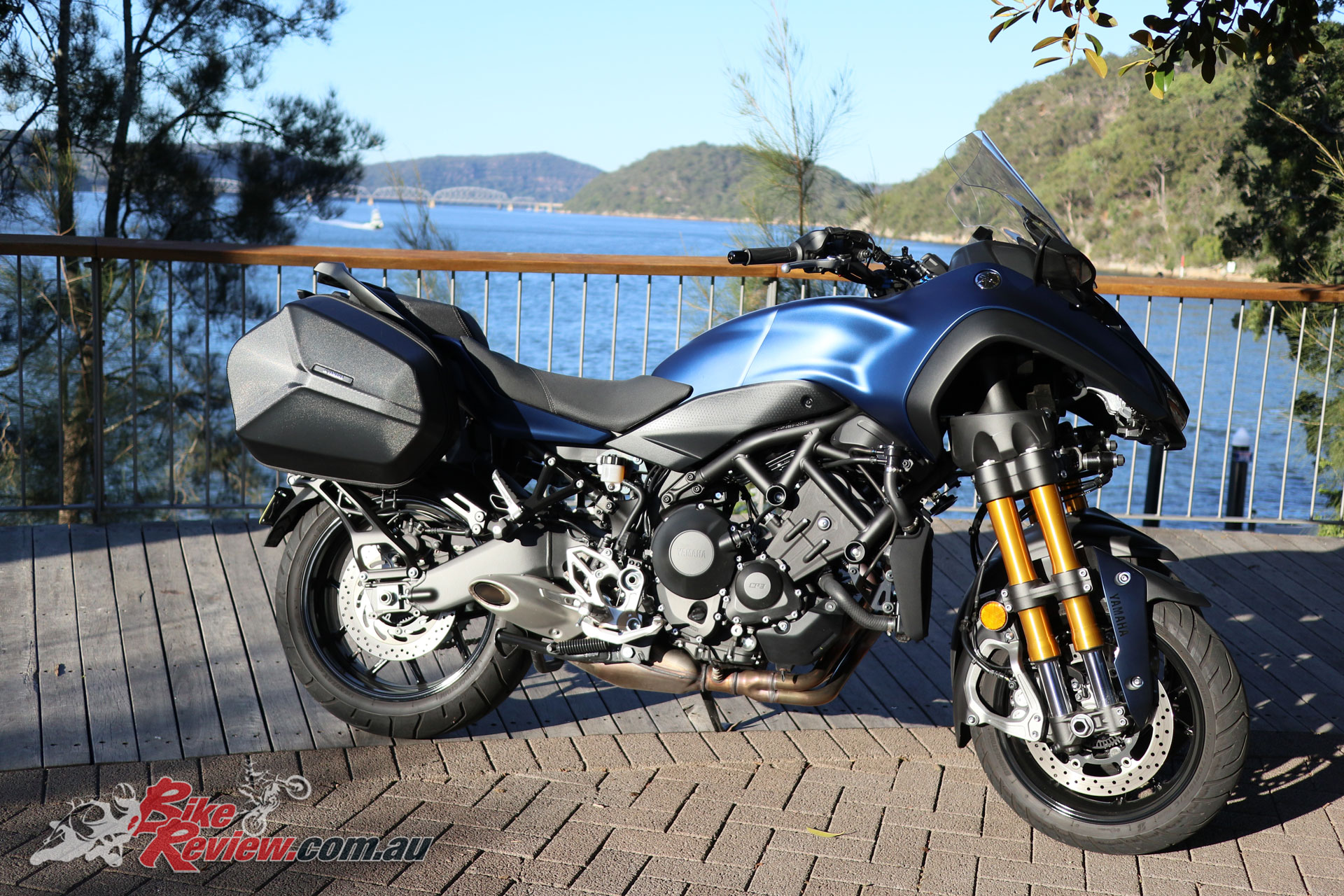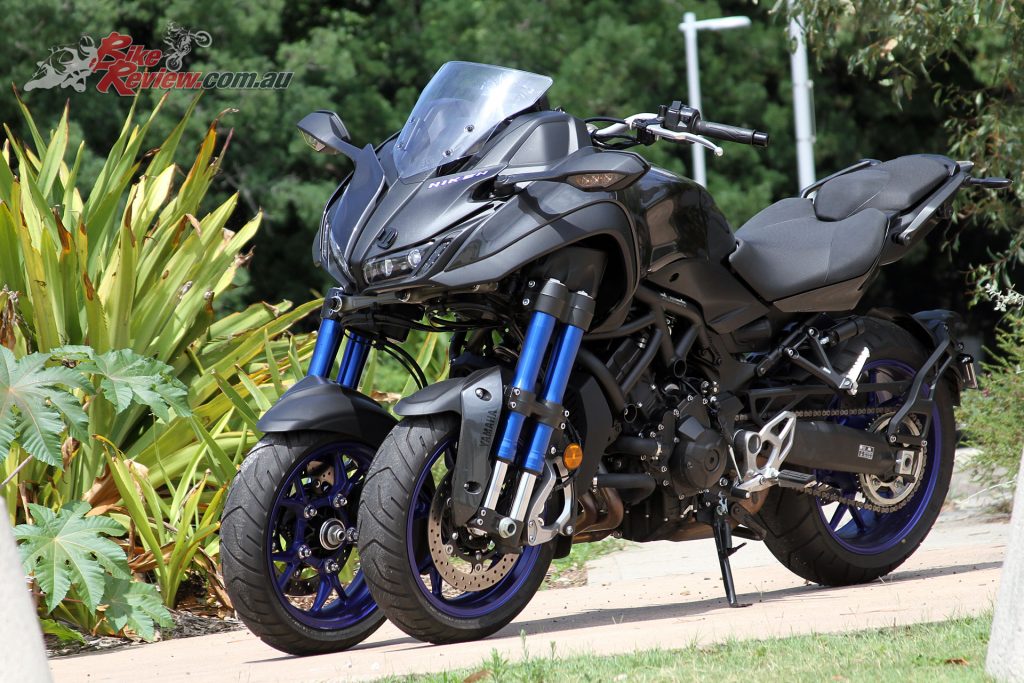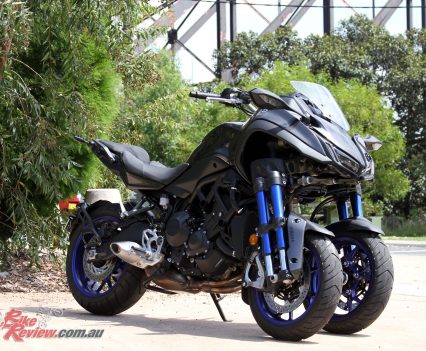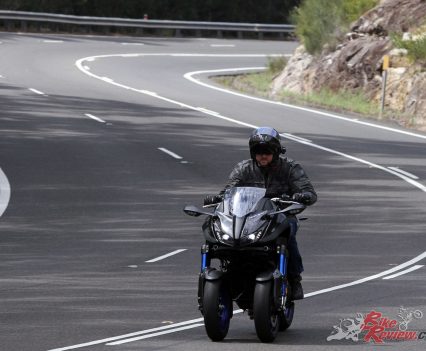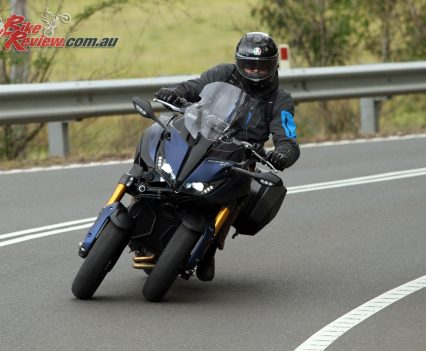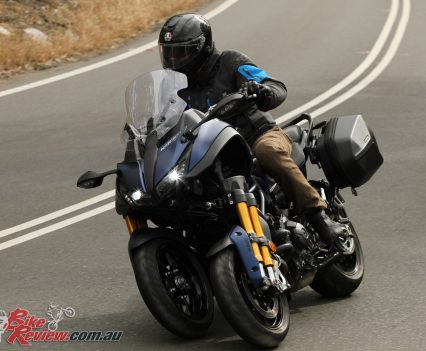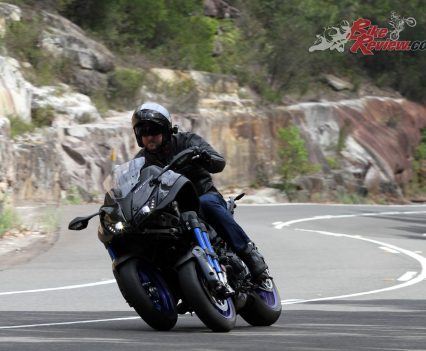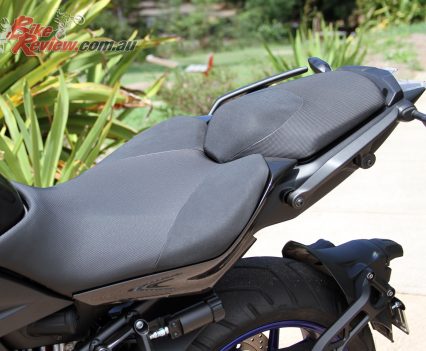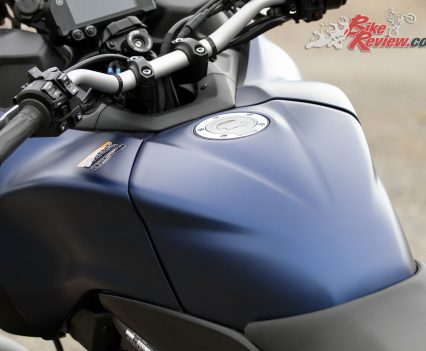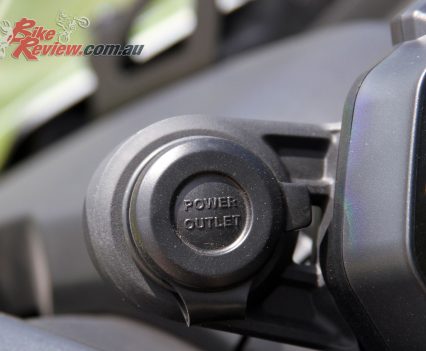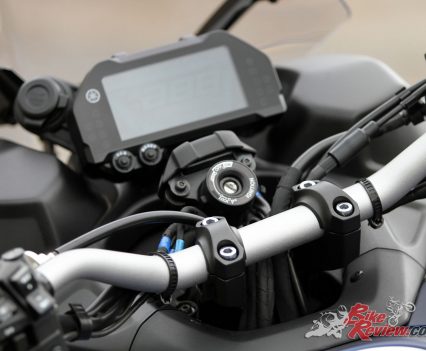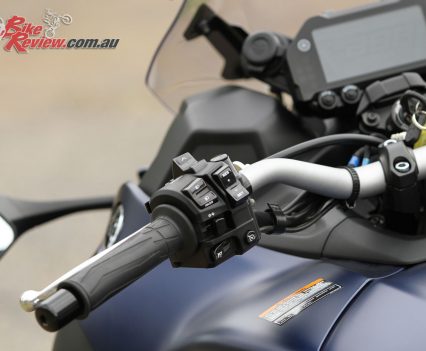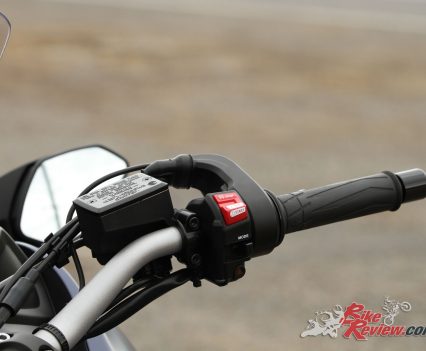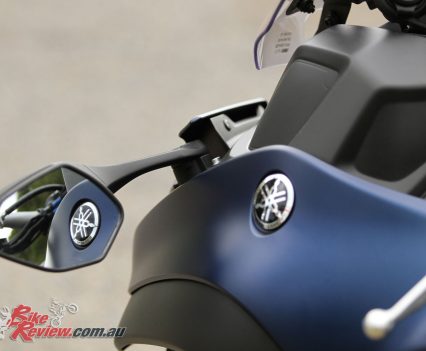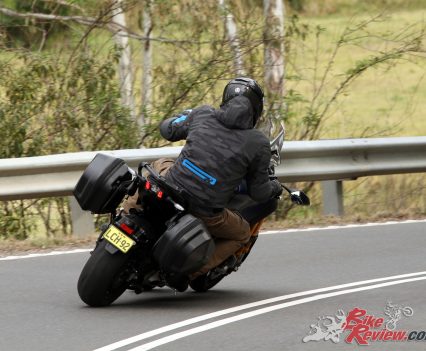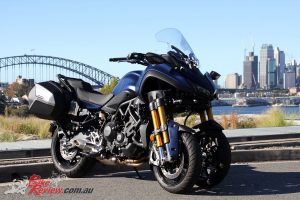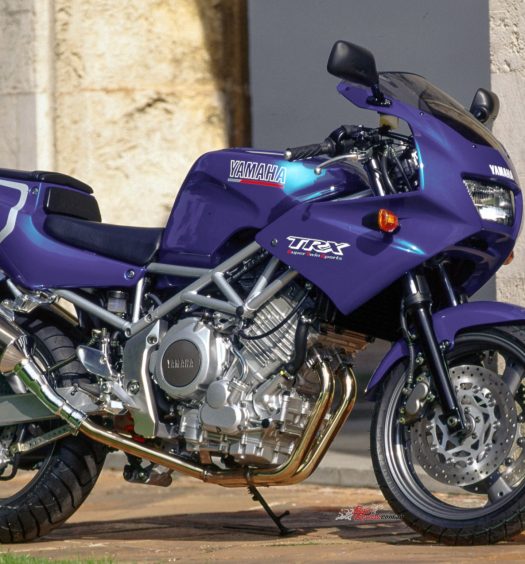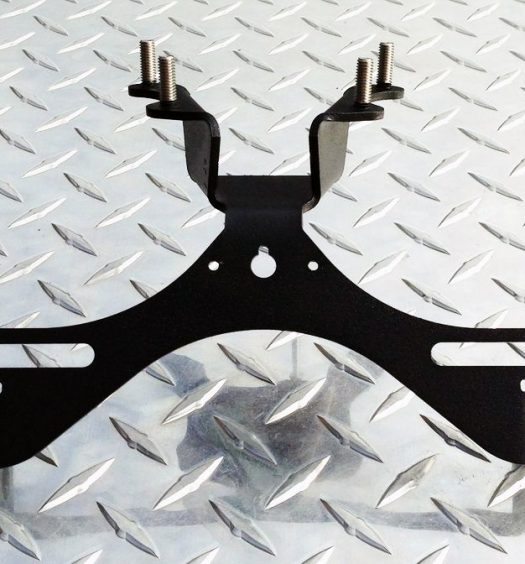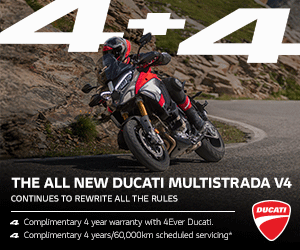We take the 2019 Yamaha Niken and Niken GT and put them both to the ultimate test. Here is our review and video... Review: Jeff Ware, Kris Hodgson Pics: Heather Ware, Kris Hodgson
Yamaha’s Niken and Niken GT have got to be the most interesting motorcycles we’ve ever had the pleasure of riding, as well as the most unusual, with dual front wheels really putting this machine in a class of its own. We rode both models in just about every condition possible and came away with mixed feelings but big smles. They are great bikes but we couldn’t answer the question – what are the advantages of two front wheels?
There’ll be endless questions about why Yamaha embarked on this project, and plenty of people will no doubt have strong opinions about a three-wheeler being classified as a motorcycle, but everywhere I went on the Niken people were genuinely interested. I was actually surprised how open minded the response was.
To be honest I don’t really care about the why’s, Yamaha did it and the Niken is a seriously cool thing if you ask me, but obviously it’s another thing entirely to put down your hard earned on something like this. More on that later though.
2019 Yamaha Niken Full Review Video
The Niken is based on Yamaha’s MT-09, and is closer to the Tracer 900 engine-wise – as far as tune, which means a slightly more relaxed power delivery and throttle response. Relaxed I hear you say, well that’s no good, but when you’re starting with the MT-09 triple it’s hardly a problem.
The front-end is an Ackerman dual axle steering mechanism with canti-lever double USD adjustable forks on each side, and runs 15in wheels with a disc brake on each. The reason for that massive front-end is because of all the moving mechanisms, as the 45-degree lean angle requires a huge amount of differentiation between each of those fork-leg setups. Makes you appreciate the simplicity (and effectiveness) of a traditional setup really.
Very wide ‘bars, that massive front fairing, a simple LCD dash and the same electronics you’ll find on the Tracer 900, controlled via the switchblocks make up the front-end. The GT as tested here adds that tall touring screen, alongside cruise control and heated grips.
A touring style seat offers a comfortable perch, and the tank narrows enough compared to the front fairing that the Niken GT feels more like a normal motorcycle in this area, even if you’ve got an enormous expanse of bodywork in front of you. It’s quite a tall motorcycle though and the 820mm seat height is magnified by the width, which at 180cm was easily manageable, even two-up, but for shorter riders may be more of a concern.
The rear includes a grab rail, generous pillion seat and reach to the pillion ‘pegs, more traditional monoshock with external adjuster, and the swingarm is 15mm longer than that on the MT-09. The GT boasts the semi-rigid panniers, which a plastic outer shell that makes them pretty water resistant, but not waterproof.
The Niken is a big bike though, and weighs in at 263kg on the road according to Yamaha, and no you can’t just park it and hope it’ll stand up. It requires a side-stand, and does include a centre stand. Particularly on the GT with the panniers it’s also a fair throw of the leg to get seated.
Setting off for the first time bears a bit of caution, if I had to describe the Niken with a single word I’d say stable, but that unique front-end setup is very sensitive and the bike can wander at very low speeds to the smallest of ‘bar inputs, especially if you’re stuck behind someone crawling along. The more I rode the Niken the less often this happened, however on really uneven surfaces it was more noticeable and coming to a halt mid-lane was a safe strategy to ensure that wander didn’t carry me into another lane (but can be extra slippery).
I think this comes down to how the drive from the rear and the front-end grip really effects how the front-end stabilises. Having tested the Niken months ago, getting my hands on the GT I really noticed there was a point at which enough drive from the rear changed the front-end characteristic, and that wander disappeared. THe rear does work hard though, with noticeable rear tyre wear on both machines in our test period and the TC working hard at times…
The bike’s front-end weight is also far more noticeable for really low speed manoeuvres, but once you’re moving the Niken rides a lot like your typical motorcycle, with that stability coming into play, with a surprisingly quick turn in and fall onto the side of the tyre.
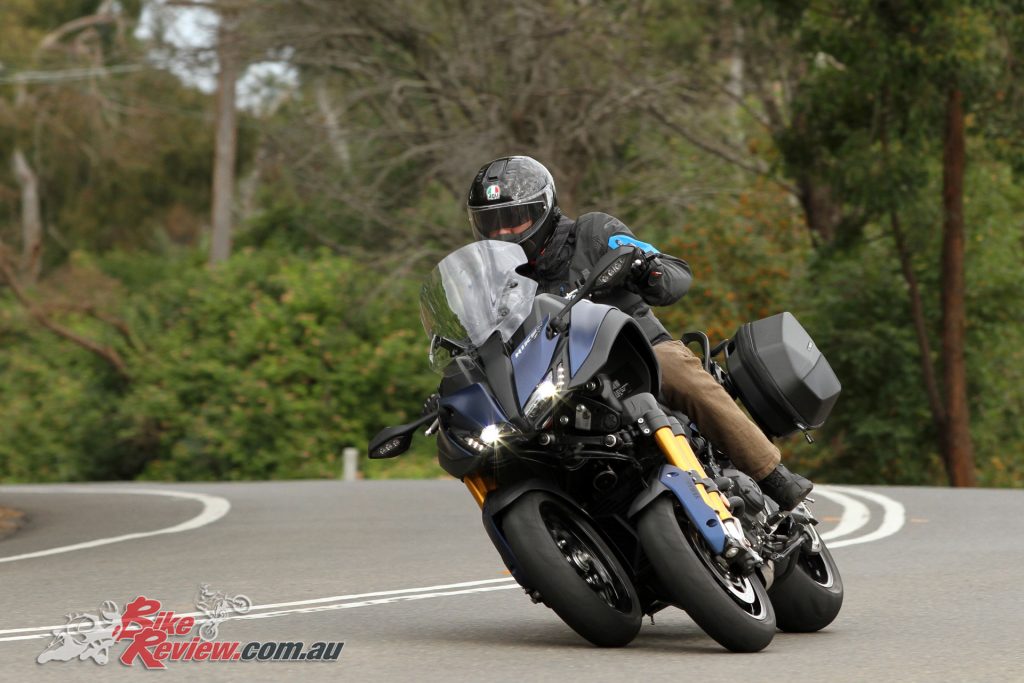
You can push that GT hard in the dry but Jeff had a few scary slides in the wet, with Kris in tow to witness the massive drifts!
The downside is that from a traditional motorcycling perspective, for me at least, it was really hard to ascertain front-end feel, with the additional stability kind of replacing the feel you’d get with a traditional setup. I didn’t find the limits of the Niken in my time testing it, and my level of confidence was steadily rising, leaving me wondering if given enough time that feel would come. After all the Niken is something totally new, which means that it’s a bit of a blank canvas when it comes to learning the ins and outs of the machine.
Jeff pushed the bikes hard and had some pretty big slides on the front, a few I saw when following on a normal bike that didn’t lose the front in the same situation. Jeff felt the inside front tyre would let go, drift, then the outside tyre would stop the slide.
With the vast majority of my riding including a packed camera bag and tripod in tow it’s a bit of a constricting factor, but I did find that while lean angle on the Niken comes easily (too easily at times), it was far more rewarding to get off the bike and hang off a bit, preventing that really fast fall onto the side of the front tyres and the ensuing unsurety about where the limits lie. Just a good riding habit really, but with a tripod strapped to the bottom of your bag, it’s hard to shift across a seat!
Of course with 45-degrees of lean angle, it’s safe to say I wasn’t in that much danger of overcooking it, but it’s the sensation of grip and feel which builds confidence. With all that said, the level of lean possible is impressive and that really does give the Niken the right to call itself a motorcycle in my book.
Having picked the bike up in torrential rain, after a period of dry weather I again found the Niken GT stable, however the lack of feel makes it hard to quantify the benefit, and I was getting a bit of rear wheel slip over the white lines and really slippery sections, so while there’s a definite benefit over crappy surfaces, it’s no cure-all. In comparison when it comes to stopping there’s an obvious benefit from three wheels, although the sensation of the ABS kicking in on all three wheels can be a weird one.
Performance is also plentiful, with the characterful triple burble and there was exceptional acceleration, enough to lift the front wheels, although I only know that from seeing Jeff do it. It’s a bit of a testament to Yamaha that they’ve done such a good tuning the bike, as weighing in at 260kg or so, with another 140kg of two riders there’s good drive in any condition. The addition flywheel effect is the big benefit, giving a bit more flow and smoothness to the power transitions.
The trade-off, because there always is one, is fuel economy, recording about 15km per L, and I had the fuel gauge drop from half at 150km to a blinking low by about 180, with the fill up being 15L for 220km travelled. There should be another 3L in the tank for 18L total, which could bring you closer to 250 between refills, but a lot of this riding was cruising in third or fourth.
Another area where the Niken GT did stand out was two-up, which was a bit more restrained riding, but got a big thumps up from the pillion as far as comfort, with ample power, the stability and additional electronics making for a fun long distance option. It’s a fun machine in this circumstance, and with all the GT extras is a nice overall package.
The big comparison is the fact you can grab a Tracer 900 for $6.5k less than the standard Niken, with the GT an additional $2k, and while the Niken is a bit of special and unlikely to be compared in that way, at $23,999 + ORC for the GT that’s a fair whack.
I’d personally love a GT in the shed as a sports touring machine, alongside a few other machines, but the price is a bit prohibitive to the casual buyer, and pushes the Niken more towards a special edition that you’ll be showing off in 25-years. That being said $25k is pretty normal price-wise for a decent small car, so that could be my admittedly super-tight valuation metric being a bit out of whack with reality… I guess that’s what happens when you’ve only bought motorcycles for the last… well ever.
I’d still like to own one though and would opt for the GT, the extra $2k is worth it for the screen, electronics and panniers if you ask me, and the Phantom Blue with gold forks really stands out. It wouldn’t be as a replacement motorcycle, but as an addition to the shed. In the end we could not find any advantage of the front-end, nor much of a disadvantage, but for now it’s a two-wheel bike for us.
Check out the video above for a more detailed look into the performance side of the riding and if you get the chance, head to your local Yamaha dealer and try a Niken, you will be amazed…
2019 YAMAHA NIKEN GT SPECIFICATIONS
PRICE: $23,999 + ORC
Warranty: Two-year, unlimited kilometre
Colours:
Claimed power: 84.6kW [115bhp]@10000rpm
Claimed torque: 87.5 Nm[64.5ft-lbs]@8500rpm
Wet weight: 263kg
Fuel capacity: 18L
Engine: Liquid-cooled, crossplane triple, 12-valve four stroke, 78 x 59.1mm bore x stroke, 847cc, 11.5:1 compression, fuel injected with selectable three engine modes, traction control three levels
Gearbox: Six speed, constant mesh, quickshifter.
Clutch: wet plate, multiple disc, assist & slipper
Chassis: Diamond frame
Suspension: Double upside down forks, 110mm travel, swingarm with linkage, 125mm travel, semi-adjustable
Brakes: ABS : Front dual 298mm rotors with four pot radially mounted calipers, rear single 282mm rear rotor with a single pot caliper.
Wheels: Cast multispoke, 15in F 120/70 – 15, 190/55ZR17 Bridgestone A41
DIMENSIONS:
Overall length: 2150mm
Width: 885mm
Wheelbase: 1510mm
Seat height: Adjustable – 820mm
Ground clearance: 150mm
Track: 410mm
Trail: 74mm
Caster: 20º
Instruments: Multifunction LCD display, secondary trip counter display and gear indicator
2019 YAMAHA NIKEN SPECIFICATIONS
PRICE: $21,999 + ORC
Warranty: Two-year, unlimited kilometre
Colours: Grey
Claimed power: 84.6kW [115bhp]@10000rpm
Claimed torque: 87.5 Nm[64.5ft-lbs]@8500rpm
Wet weight: 263kg
Fuel capacity: 18L
Engine: Liquid-cooled, crossplane triple, 12-valve four stroke, 78 x 59.1mm bore x stroke, 847cc, 11.5:1 compression, fuel injected with selectable three engine modes, traction control three levels
Gearbox: Six speed, constant mesh, quickshifter.
Clutch: wet plate, multiple disc, assist & slipper
Chassis: Diamond frame
Suspension: Double upside down forks, 110mm travel, swingarm with linkage, 125mm travel, semi-adjustable
Brakes: ABS : Front dual 298mm rotors with four pot radially mounted calipers, rear single 282mm rear rotor with a single pot caliper.
Wheels: Cast multispoke, 15in F 120/70 – 15, 190/55ZR17 Bridgestone A41
DIMENSIONS:
Overall length: 2150mm
Width: 885mm
Wheelbase: 1510mm
Seat height: Adjustable – 820mm
Ground clearance: 150mm
Track: 410mm
Trail: 74mm
Caster: 20º
Instruments: Multifunction LCD display, secondary trip counter display and gear indicator
2019 Yamaha Niken & Yamaha Niken GT Gallery
The Verdict | Review: 2019 Yamaha Niken and Niken GT


